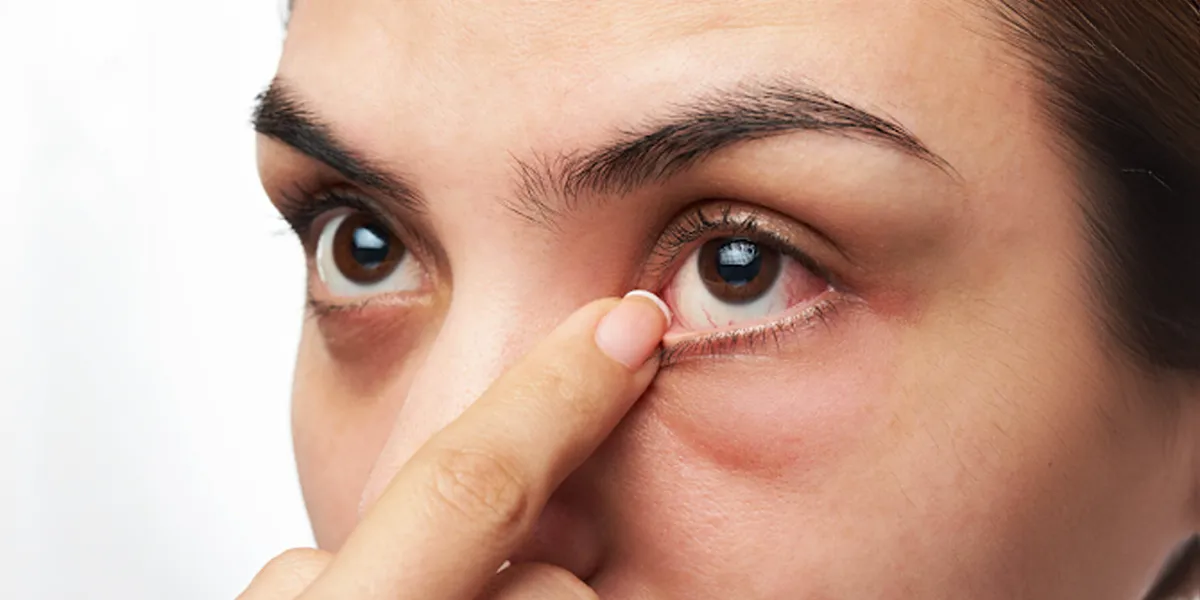How to Prevent Eye Damage from Diabetes?

Your eyes can express so many things without saying anything. This is true in every aspect, including your health. And diabetes is no exception! It can cause eye damage and vision problems if not controlled well.
In this blog, we will help you understand the connection between diabetes and eye health, the potential problems, and how you can prevent eye damage from diabetes.
What is the Connection Between Diabetes and Eye Health?
The connection between diabetes and eye health is primarily due to the damage caused by high blood sugar levels to the blood vessels and nerves throughout the body, including those in your eyes.
But what are the problems caused by diabetes to our eyes?
What are the Different Eye Problems Related to Diabetes?
Diabetes can cause several eye problems, such as dry eyes, redness/itching in the eyes, etc. Some of the eye-related problems caused by diabetes are:
1. Diabetic Retinopathy: Damage to the blood vessels in the retina.
2. Diabetic Macular Edema (DME): Swelling in an area of the retina called the macula.
3. Cataracts: Clouding of the eye’s lens.
4. Glaucoma: Increased pressure in the eye, damaging the optic nerve.
How Does Diabetes Affect Your Eyes?
When your blood sugar levels are consistently high, they can cause damage to the blood vessels in your retina (the light-sensitive tissue at the back of your eye).
This damage can lead to the leaking or bleeding of fluids in the eyes, which affects your vision. Over time, new, weaker blood vessels can grow and cause even more problems, such as swelling and scars.
What are the Causes and Risk Factors of Eye Damage?
The primary cause of diabetes-related eye damage is long-standing high blood sugar levels, which is not under control. Other risk factors include:
- High blood pressure
- High cholesterol
- Smoking & alcohol
- Being overweight or obese
To know your chances of Diabetes reversal, take the Diabetes Reversal TestDiabetes Reversal
Calculator
What are the Symptoms You May Experience in Case of Eye Damage from Diabetes?
Diabetes-related eye problems can develop without any symptoms initially. However, as the condition progresses, you might notice:
- Blurry vision
- Dark spots or strings floating in your vision
- Difficulty seeing at night
- Loss of vision in one or both eyes
- Difficulty in differentiating colours
If you experience any of these symptoms, you MUST consult an eye specialist (ophthalmologist) immediately.
How to Diagnose Eye Problems in Diabetes?
Once you notice or experience any of the symptoms we mentioned earlier, you should immediately consult an ophthalmologist.
We urge readers never to self-diagnose. An ophthalmologist will check your eye condition and, based on that, will suggest specific eye tests.
Some of them could be:
- Visual Acuity Test: To measure how well you see at various distances.
- Dilated Eye Exam: Where drops are used to widen your pupils so the doctor can see the inside of your eyes.
- Fluorescein Angiography: A dye is injected into your arm, and pictures are taken to see how well the blood is flowing in your retina.
- Optical Coherence Tomography (OCT): A scan that provides cross-sectional images of your retina.
Dr. Vidya Walinjkar, Consulting Diabetologist at Fitterfly, says, “You might not always notice symptoms of eye damage. That’s why it’s important for everyone to get their eyes checked regularly, at least once a year, whether you have diabetes or not.”
What are the Treatment Options for Eye Damage in Diabetes?
Once you get diagnosed with any eye problems, your doctor/opthalmologist will advice you the treatment plan depending on the severity and type of the condition. Some of them could be:
1. Blood Sugar Management
Most of the problems in diabetes arise due to not keeping the blood sugar levels in check. Eye damage or problems in vision/eye too is one of them.
So one of the first and most important things as a pre-requisite for any medical treatment is to control your blood sugar levels. This will include making major lifestyle changes in terms of diet, fitness, sleep & stress, and medication/insulin if your doctor advises.
2. Medications
Medications: Several eye medications can reduce swelling and prevent diabetes eye damage by inhibiting the growth of abnormal blood vessels. These medications should be taken strictly according to your doctor’s advice.
3. Laser Treatment
Used to seal/repair leaking blood vessels in your eyes
4. Surgery
In severe cases, procedures like vitrectomy might be necessary to remove blood from the eye or scar tissue from the retina.
Reduced diabetes medications in 3 months


6.8%
Happy members
EMI
Guarantee
4.8/5
Diabetes Prime Program
How to Prevent Eye Damage from Diabetes and Prevent Diabetes Eye Disease?
Preventing eye damage from diabetes and Prevent Diabetes Eye Disease involves a proactive approach and regular eye care. To protect your eyes, you can try the following tips:
1. Control Blood Sugar Levels
Effectively managing your blood sugar levels is key to preventing diabetic eye complications. The Fitterfly Diabetes Prime program is designed to help you achieve this through a scientific approach.
This 12-month program uses Continuous Glucose Monitoring (CGM) technology to provide real-time feedback on how different foods impact your blood sugar levels.
With personalized coaching in nutrition, fitness, stress, and sleep management, the program helps you understand and control your diabetes more effectively.
By maintaining stable blood sugar levels, you can significantly reduce the risk of developing diabetic retinopathy and other eye issues. You can get more details about the program on our website.
2. Regular Eye Exams
Make it a priority to get your eyes checked at least once a year by an ophthalmologist. Early detection of conditions like diabetic retinopathy can prevent severe complications.
3. Manage Blood Pressure and Cholesterol
High blood pressure and cholesterol can exacerbate eye problems in diabetes. Incorporate heart-healthy foods, engage in regular physical activity, and take prescribed medications to manage these conditions.
Our FitHeart program is designed to improve your heart age by 6 years and enhance overall cardiovascular health, indirectly supporting your eye health by managing the cardiovascular risks associated with diabetes.
4. Healthy Lifestyle
- Diet: Include foods rich in key nutrients for eye health, such as green leafy vegetables like palak, ghongura, methi, chaulai, laal saag and fruits like apples, guava, berries like strawberry, shatoot etc . Spices easily available in every Indian kitchen like turmeric and fenugreek are beneficial for their anti-inflammatory properties and can help in managing diabetes.
- Exercise: Regular activities like yoga, walking or any other activity you enjoy doing like dancing, karate etc improve circulation and help in controlling blood sugar levels. A 10-15 minutes walk after your meals can help your blood sugar levels a lot.
- Avoid Harmful Habits: Diabetes or no diabetes – Smoking and excessive alcohol intake can lead to further complications.
- Stress Management: Practices such as meditation or deep breathing exercises can reduce stress, which is important for overall well-being and disease management. You can also do anything that keeps you distracted from stressor like reading a book, wathing a show, cooking your favorite dish, doing some fun craft, attending a hobby class – all these will help you get momentary relief from stress, but do consider addressing the actual cause for total relief. It might sound difficult but will be worth the effort.
5. Monitor Symptoms
Stay alert to any changes in vision such as blurriness, spots, or shadows and consult your doctor promptly if you notice any such symptoms.
How We At Fitterfly Can Help You?
If you start noticing any changes in your eyes, like difficulty in seeing, vision changes, unable to differentiate between colours, watery eyes, or even irritation in your eyes, the first thing that you should do is to visit an ophthalmologist.
At Fitterfly, we believe addressing diabetes is key to managing and preventing eye problems like cataracts, diabetic retinopathy, and glaucoma.
With Fitterfly Diabetes Prime Program, we provide a holistic approach to managing your diabetes like a pro.
It helps you in every aspect of your lifestyle, from diet and nutrition to mental wellness and fitness, helping you take control of your health comprehensively.
We encourage you to contact us today at 08069450746 to learn more about how our Diabetes Prime Program can benefit you or a loved one.
This blog provides general information for educational and informational purposes only and shouldn't be seen as professional advice.



















